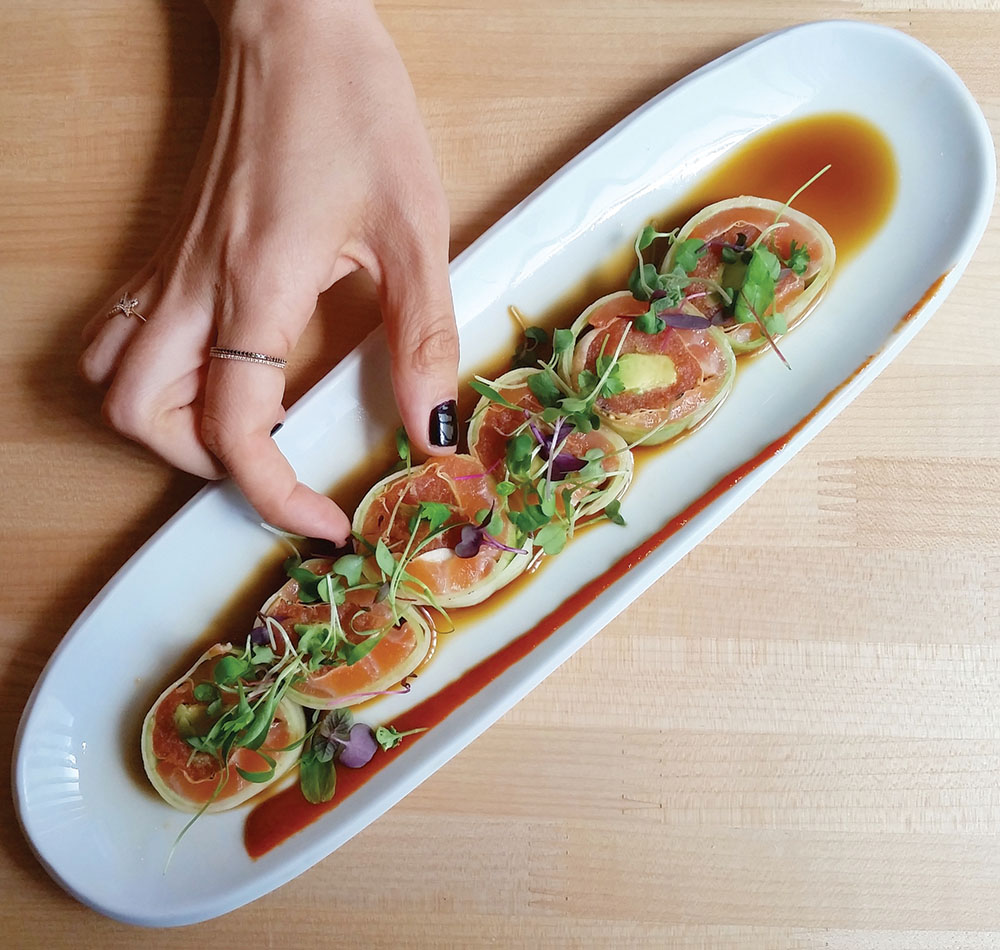
Courtesy of Subject

Hinoki & the Bird, the unofficial midday canteen for CAA and WME execs craving wagyu burgers and barbecue Jidori chicken, reopened for lunch July 15. Its trellised Century City patio is most in-demand — companies from Amazon Studios to UTA have held “welcome back” gatherings there — but covers are still down 50 percent as hybrid and fully remote schedules bite into business. “I think this is the new normal,” says owner Walter Schild.
Call it a vibe shift, or something more difficult to swallow, but two and a half years after the onset of COVID, Hollywood’s sit-down restaurant scene has transformed. One o’clock no longer is what it used to be. Propagate chairman Ben Silverman, known for his Before Times ubiquity in dining rooms around town, muses of the new rhythm, or at least his own, “Lunch is out, walks are in, Zooms will never die.”
The power places are still booking lunch reservations substantially below pre-pandemic levels (it’s no longer impossible to snag a booth at The Grill on the Alley), if they deem it profitable to serve at all. Meanwhile, the meal itself has changed. The rolling-video-call era has done away with the need for those one-hour-or-less meetups, for which the limited-menu, gratuity-already-tabulated Sugarfish branches had become favorite choices. Now operators notice a newfound unhurriedness among patrons longing to reconnect: multiple courses, leisurely catch-up chatter, even — can you believe it, in this century? — free-flowing alcohol.
“It becomes a much longer, more interactive event because people want to get out,” says business manager John McIlwee. “I think the lunch has become much more important now because it’s not mandatory. I only meet people I want to. That whole idea of having to see people all the time is out the window.” Agrees attorney Lev Ginsburg: “This shouldn’t be that surprising, right? After all, if a much longer time than usual has passed between get-togethers, there is hopefully more catching up to do.”

Courtesy of Subject
Lunch has been, at best, a break-even for many restaurants ever since the industry slowly and then suddenly stopped day drinking — hospitality veterans say this occurred sometime between the new millennium and the Great Recession (the latter also signaled the death knell of expense-account culture). Except for the private clubs, supported by members’ dues, and the hotel establishments, propped up by their guests, the squeeze is on, exacerbated by rising inflation and a historically competitive market for staff. Among the popular players now shuttered at high noon: Musso & Frank, Pizzeria Mozza and A.O.C. on Third Street.
“It’s not just about ‘Will we be busy?’ ” explains Caroline Styne, whose Lucques Group has reopened A.O.C.’s Brentwood outpost for lunch, although it’s at half its pre-COVID volume. “It’s ‘Will we be busy enough to make the investment worthwhile?’ “
Another dining room now darkened at lunch is Beverly Hills citadel Spago. “We looked at it pragmatically,” explains Tom Kaplan, senior managing partner of Wolfgang Puck Fine Dining Group, which has retained midday service at its eponymous restaurant at the Hotel Bel-Air as well as Merois at the Pendry in West Hollywood. “Lunch wasn’t high-margin before COVID, and it certainly wasn’t afterward, so we decided not to do it.”
For restaurants still serving, and even thriving, business clients’ unpredictable new schedules can frustrate attempts at assessing demand. “We noticed that, before the pandemic, you used to know which days you’d be the busiest; now you never know,” says La Scala restaurateur Gigi Leon. “The rhythms are off.” Jeff Klein, owner of the San Vicente Bungalows and the Sunset Tower, concurs: “We don’t understand the patterns anymore. They’re erratic.”

Courtesy of Subject
Several things, though, have become clear. Al fresco dining remains preferred, especially as new COVID variants continue to emerge. On Fridays (when, observes Klein, customers are “all in their homes”), alcohol, for two decades near-verboten, has begun to flow. “I do notice it at the end of the week — more cocktails, more wine,” says Pamela Gonyea, who has been the maître d’ at Beverly Hills’ The Grill on the Alley for 21 years.
Also, strikingly, folks just aren’t in a rush. “Lunches that were very efficient — in and out in an hour — today, people are here from the beginning [of service] to the time we close,” notes Jesse Duron, manager of West L.A. nexus Hamasaku, whose lunch volume is down 50 percent compared to the pre-COVID age. “Maybe it’s because they haven’t seen each other for so long, or it just becomes more of an event, but when they do come in, they’re spending more time together. They linger.” He adds, “The culture has changed.”
Explains James F. Lopez, president of Macro Film Studios, who can be found in Beverly Hills at Ocean Prime and the Maybourne Terrace: “I get so sick of being on Zoom and miss that in-person connection.”
Lacey Rose and Rebecca Sun contributed to this report.
This story first appeared in the Aug. 3 issue of The Hollywood Reporter magazine. Click here to subscribe.